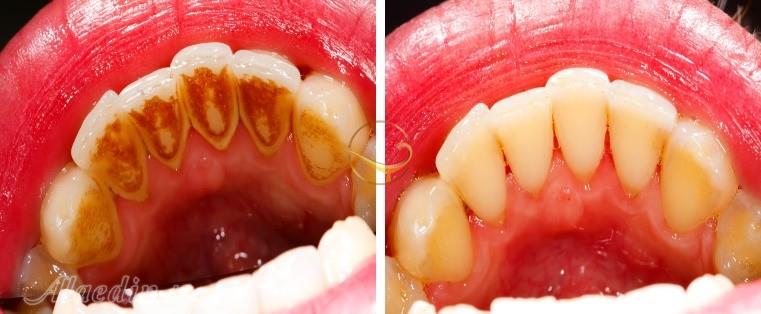Dental medicine, also known as oral medicine or dentistry, is a branch of medicine that deals with the study, diagnosis, prevention, and treatment of oral cavity disorders and diseases concerning teeth, gums, and mouth.
History of dentistry in Iran dates back to more than 800 hundred years ago. Since then there has been many improvements in dentistry in Iran. We are proud to say that dental services in Iran dental clinics, if not the best, are among the top dental services in the world, and Iranian dental clinics enjoy the most modern and cutting-edge technology and equipment.
Highly skillful dentists in Iran cover a wide range of dental care procedures, covering both medical and cosmetic dentistry.
It is also noted that cosmetic dentistry in Iran is highly popular because of professional services and also the reasonable cost of dental care in Iran, especially the highly competitive cost of dental implant in Iran.

Dental Implant
Dental implants are artificial replacements for teeth's roots. Just like the way roots support natural teeth, dental implants are directly fit into the jawbone to hold crowns or dentures (or false teeth) in place.

Different materials are used for making dental implants, like titanium. For fixing implants in place, your dental cosmetic surgeon uses an internal screw, called abutment.
Before undergoing the surgery make sure you have healthy gums and strong jawbone.
It is required to keep these structures healthy. To have long-term success of dental implants it is required to have a meticulous hygiene and regular dental visits.
It is noted that dental implant in Tehran is really popular. Beside high-quality dental services by highly skillful dentists in Iran, highly competitive dental implant cost in Iran makes dental implants so popular in Iran.
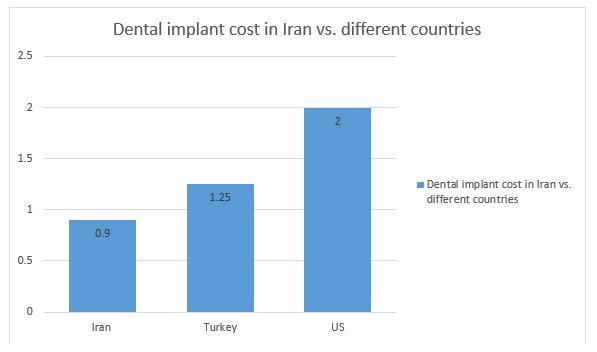
Crowns
Dental crowns, also called caps, are simply fit over the remaining of the natural tooth.

They can carry out a variety of functions including the following:
• Protecting weak tooth from breaking,
• Restoring already broken tooth,
• covering misshapen or discolored teeth,
• covering a dental implant and holding a dental bridge in place,
Different types of materials are used in making dental crowns including porcelain, ceramic, metal, and a combination of these materials.
Dental Bridges
Bridges are one of the best and most common options to cover the space if one or more teeth is missing. A missing tooth can cause an imbalance that would lead to bad bites and Temporomandibular Joint (TMJ) disorders, and also difficulty in speaking.
To improve the tooth shape and appearance, and also to strengthen a damaged tooth, bridges and crowns are the best treatments.
Your cosmetic dental surgeon cements bridges and crowns onto existing teeth or implants.
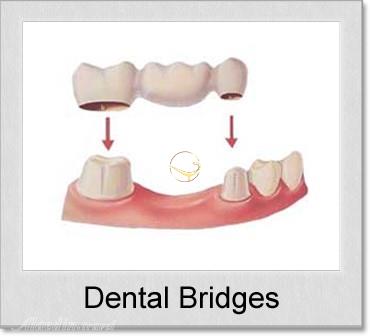
Dentures Dentures, also called false teeth, are removable replacement for missing teeth. Two types of dentures including complete and partial dentures are used when all the teeth are missing, and when some natural teeth remain, respectively. Considering your condition you may need complete or partial dentures.

After teeth are removed, dentures are fit on gums and jawbones.
Dentures provide you with lots of benefits including:
• Improving appearance,
• Helping you speak clearly, and
• Eat comfortably.
Orthodontics
Orthodontics, also called orthodontia, is a branch of dentistry that aims to diagnose, prevent, and correct malpositioned teeth and jaws. Orthodontics also aims to treat malocclusion, a condition in which teeth are not correctly positioned, causing improper bite.

Orthodontics can be performed to achieve the following:
• Closing gaps between teeth,
• Aligning tips of teeth,
• Straightening crooked teeth,
• Improving speech,
• Boosting health of gums and teeth,
• Preventing trauma to teeth, and
• Treat improper bite.
Two types of orthodontics, fixed and removable, are used in different conditions.
It is noted that follow-up monthly visits are required, and treatment may take from months to years.
Tooth Extraction
Sometimes it is necessary to extract a tooth (teeth) because of the following reasons:
• It is not possible for the dentist to fix a tooth by crowns or filling or other dental treatments because of too much damage or decay,
• Infection,
• Preparing for orthodontics (in case your teeth are too big for your mouth),
• In case a tooth cannot break through the gum because of lack of space in the mouth,
• Having extra teeth, and
• In case baby teeth have not fallen out in time.
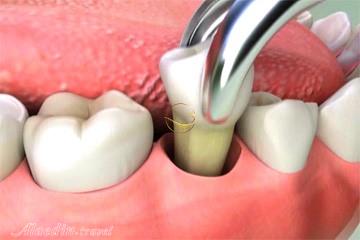
Extracting tooth can be divided to simple extraction, which is used for the teeth that can be seen in the mouth, and surgical extraction, such as extracting wisdom teeth.
The procedure is mainly performed under local anesthesia.
Dental Filling (Tooth Filling)
Among the many benefits of tooth filling, also known as dental filling, are:
• Treating damaged or decayed tooth,
• Restoring tooth to its normal function and shape, and
• Preventing further decay.
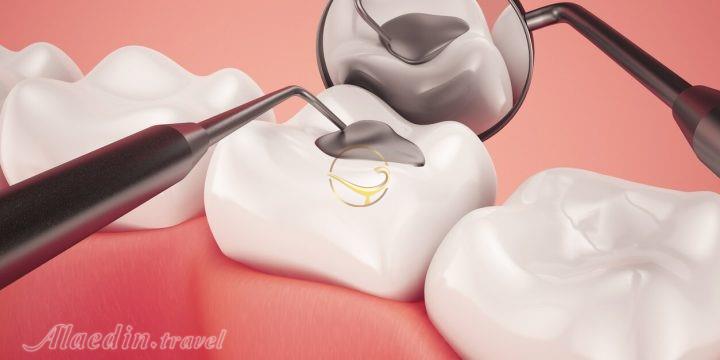
The various materials used for filling include gold, porcelain, composite resin, and amalgam. In choosing the most suitable material to fill your teeth, your dentist considers your allergies, and the extent of repair required.
Scaling and Root Planing
Healthy gums fit tightly around each tooth. However, some factors, including bad breath, swollen or red gum, bad taste in your mouth, or loose teeth, are advanced signs of gum diseases. In case of gum diseases your dentist may highly recommend scaling and root planning to treat periodontal diseases. It also keeps your teeth and gum healthy.
